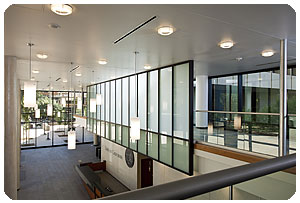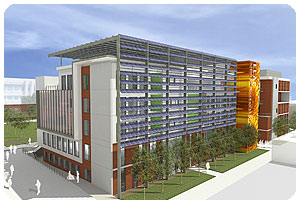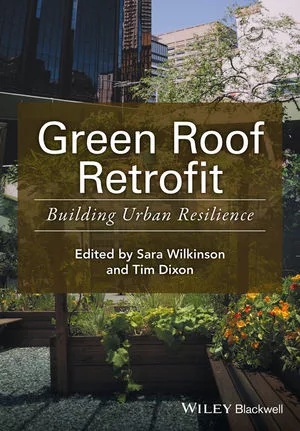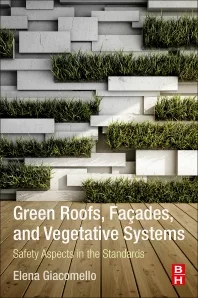California's Blueprint for Green Development
California has recently adopted some groundbreaking regulations that have raised questions about their impact on businesses.

Increasingly stringent environmental regulations are an inevitable reality considering our environmental woes. California has recently adopted some groundbreaking regulations that have raised questions about their impact on businesses.
A closer look reveals a number of reasons why someone might consider California as a place for business, especially in the green sector. Historically, California has always had a competitive advantage offered by a specialized and highly educated workforce in sectors like high-tech and biotech. That trend remains strong today. The state is feeding an enormous need to serve its own marketplace, which has a demand higher than that of many nations of the world.
There are nationwide projections of rising future resource and energy costs, which suggests that investing in sustainable design makes good business sense. And California, which has the distinction as a vanguard of coming trends, already operates in an environmentally sound location, which most likely means these measures will be adopted elsewhere in the U.S. Architectural firms like HGA Architects & Engineers are taking notice.
Certainly, California’s budget crisis has added another layer of complexity to developing there, but business owners and developers should not write the state off. Facilities will cost more to build and less to operate. Additional capital will be required for expenses such as onsite energy generation equipment and greywater systems for recycling water for non-potable uses. This capital investment will lower operating expenses, since greater energy and resource-efficiency leads to less consumption of costly off-site electricity, gas and water.
Moreover, the state’s building codes may have little impact on development in 75 cities and counties that already have more stringent standards. Los Angeles already passed an ordinance aimed at cutting tons of pollution during the next decade, while San Francisco adopted some of the most rigorous green building codes in the nation.

What may appear as onerous regulatory requirements today may simply be a blueprint for sound decisions and operations tomorrow. By following this blueprint today, businesses and designers will position themselves to function effectively as climate change progresses.
In spite of California’s lingering financial challenges, the state’s government has committed to investing in capital facility expenditures to help position businesses for the future. Legislation includes:

Development costs will rise with AB 32, as cheaper outlying sites are no longer an option and there is more competition for fewer available sites. It also may mean that some municipalities will not be accommodating development, reducing location options on a broader scale. At the same time, the site area required for projects may be reduced, as public transportation is used more frequently and fewer parking spaces are needed.
The code stipulates a wide range of design requirements aiming to cut energy usage in new structures by 15 percent, water by 20 percent and landscaping water usage by 50 percent. Many structures are affected and state-owned buildings such as HGA’s newly opened Office Building 9 in Downtown Sacramento is one example. Coupled with Building 8, HGA’s newly renovated structures use approximately 20 percent less energy and 40 percent less water than before with almost 100 percent reuse of the existing building structure and skin.
 Also
included are low-rise residential buildings, public elementary schools,
qualified historical buildings and sites, inpatient medical facilities and secondary
and community college educational facilities. The latter includes current green
HGA projects at L.A. Harbor College’s Science Complex and East L.A. College’s
Student Success Center. The under-construction
Harbor College
will be a net-zero energy complex featuring a 54 percent water usage reduction
and a 43 percent reduction of energy. Net zero also is the goal at East L.A.
College, which is currently in the design development stage. Both rely on
biomimicry design methods.
Also
included are low-rise residential buildings, public elementary schools,
qualified historical buildings and sites, inpatient medical facilities and secondary
and community college educational facilities. The latter includes current green
HGA projects at L.A. Harbor College’s Science Complex and East L.A. College’s
Student Success Center. The under-construction
Harbor College
will be a net-zero energy complex featuring a 54 percent water usage reduction
and a 43 percent reduction of energy. Net zero also is the goal at East L.A.
College, which is currently in the design development stage. Both rely on
biomimicry design methods.
The design requirements of AB 32 and SB 375 overlap LEED standards. In order to achieve the targeted goals of energy and resource conservation, the green code is much more restrictive than the prior building code. Education is needed in order for owners, designers and builders to comply with the code and budgets must be adjusted.

The $44 million L.A. Harbor College Sciences
Complex. The 73,767 SF structure is seeking net zero energy/carbon neutral as
part of HGA’s goal of achieving LEED Platinum certification.
Increasingly stringent environmental regulations are an inevitable reality considering our environmental woes. California has recently adopted some groundbreaking regulations that have raised questions about their impact on businesses.
A closer look reveals a number of reasons why someone might consider California as a place for business, especially in the green sector. Historically, California has always had a competitive advantage offered by a specialized and highly educated workforce in sectors like high-tech and biotech. That trend remains strong today. The state is feeding an enormous need to serve its own marketplace, which has a demand higher than that of many nations of the world.
There are nationwide projections of rising future resource and energy costs, which suggests that investing in sustainable design makes good business sense. And California, which has the distinction as a vanguard of coming trends, already operates in an environmentally sound location, which most likely means these measures will be adopted elsewhere in the U.S. Architectural firms like HGA Architects & Engineers are taking notice.
Certainly, California’s budget crisis has added another layer of complexity to developing there, but business owners and developers should not write the state off. Facilities will cost more to build and less to operate. Additional capital will be required for expenses such as onsite energy generation equipment and greywater systems for recycling water for non-potable uses. This capital investment will lower operating expenses, since greater energy and resource-efficiency leads to less consumption of costly off-site electricity, gas and water.
Moreover, the state’s building codes may have little impact on development in 75 cities and counties that already have more stringent standards. Los Angeles already passed an ordinance aimed at cutting tons of pollution during the next decade, while San Francisco adopted some of the most rigorous green building codes in the nation.

Office Building 9 in Downtown Sacramento
targeting LEED Silver certification
Blueprint for Green Future
The same climate change factors that are driving California’s legislation apply to the rest of the nation, so it is a safe bet that other states will follow suit. A sound decision to develop a facility anywhere in the world requires a calculation of the location’s environmental future. Will water be affordable down the line? What will the climate be like? What are the opportunities for power generation? How will workers get to the facility if they can’t afford private transportation, given rising fuel costs?What may appear as onerous regulatory requirements today may simply be a blueprint for sound decisions and operations tomorrow. By following this blueprint today, businesses and designers will position themselves to function effectively as climate change progresses.
In spite of California’s lingering financial challenges, the state’s government has committed to investing in capital facility expenditures to help position businesses for the future. Legislation includes:
- California Global Warming Solutions Act of 2006 (AB 32),
- the subsequent “anti-sprawl bill” of 2008 (SB 375),
- California Green Buildings Standard Code in 2009 and
- Other emerging local initiatives.

East Los Angeles College Student Success
Center, where HGA has a LEED Gold and net-zero energy goal.
Challenges
Legislations pose huge challenges, regardless of the lure any incentive may have. Through AB 32, communities must plan to reduce GHG emissions from vehicle trips at the same time development occurs. The only practical ways to do this are to expand public transportation and limit sprawl. Whereas land use patterns have long been based on access by private vehicles to outlying, lower-cost development sites, those in California’s immediate future will primarily be based on access by public transportation to infill development sites. We have already seen these types of projects in the form of transit villages and urban densification. This trend is now effectively mandated by law.Development costs will rise with AB 32, as cheaper outlying sites are no longer an option and there is more competition for fewer available sites. It also may mean that some municipalities will not be accommodating development, reducing location options on a broader scale. At the same time, the site area required for projects may be reduced, as public transportation is used more frequently and fewer parking spaces are needed.
The code stipulates a wide range of design requirements aiming to cut energy usage in new structures by 15 percent, water by 20 percent and landscaping water usage by 50 percent. Many structures are affected and state-owned buildings such as HGA’s newly opened Office Building 9 in Downtown Sacramento is one example. Coupled with Building 8, HGA’s newly renovated structures use approximately 20 percent less energy and 40 percent less water than before with almost 100 percent reuse of the existing building structure and skin.

The design requirements of AB 32 and SB 375 overlap LEED standards. In order to achieve the targeted goals of energy and resource conservation, the green code is much more restrictive than the prior building code. Education is needed in order for owners, designers and builders to comply with the code and budgets must be adjusted.
Looking for a reprint of this article?
From high-res PDFs to custom plaques, order your copy today!





